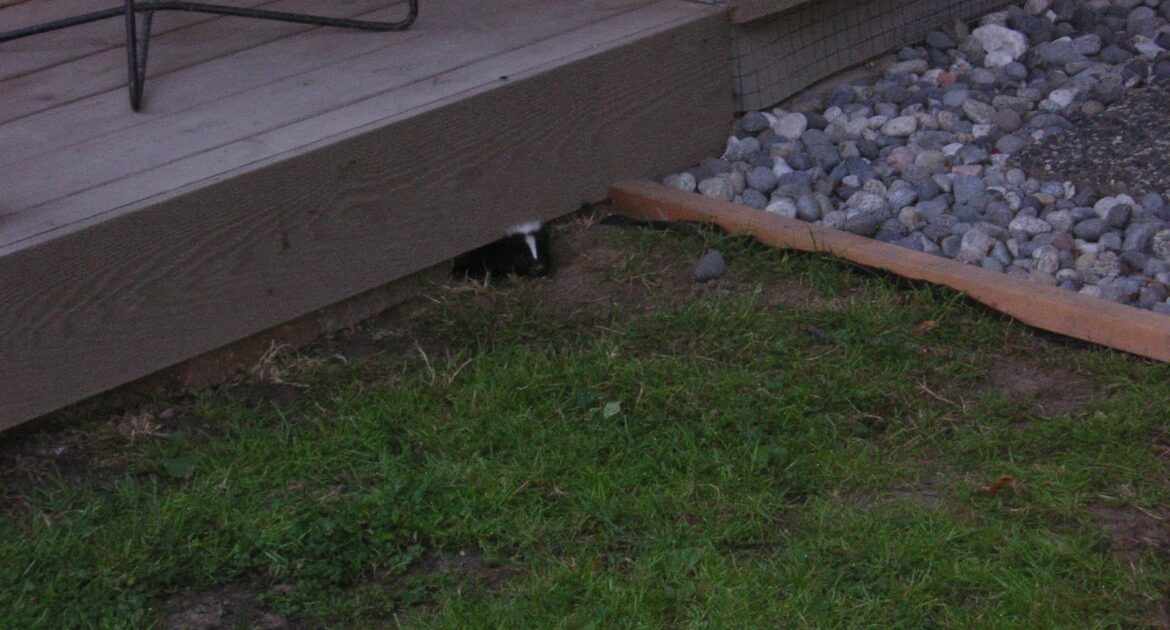People often believe they would know if a skunk was living on their property, but that is not always the case. Sure, skunks produce one of the most pungent defences in the animal kingdom, but they may not use it if they feel safe. If you want to know how to get rid of skunks or prevent them on your property, you need to understand where they live and how to secure those areas.
Favourite Hiding and Living Spaces of Skunks
Skunks typically live in dens. Most of the time, the animals dig these dens with their front claws. Still, sometimes skunks find suitable homes in abandoned nests of other species like foxes.
The prerequisite for a skunk is that the area provides plenty of food and water. If it can find these essentials on your property, it can choose to build a den. As far as where it will nest, that depends. There are many options for skunks but only a few favourites.
1. Under Sheds
Sheds are low-clearance structures, meaning it is challenging to check underneath. The lowness of the structure means added security for skunks and their babies.
The animal can dig to enlarge the area under the shed, making it more comfortable to raise young. That said, a skunk will always choose less work if it’s an available option.
2. Under Decks
Decks and porches typically have taller understructures, allowing skunks to maneuver easily. The space under the structures also provides multiple entry and exit points, making it ideal for out-maneuvering predators.
Prevention is the best way to ensure the underside of your deck or porch remains skunk-free. Use a metal mesh and install it along the edges of the deck, making sure to bury a portion and making it near impossible for the skunk to find its way in.
3. Garages
Skedaddle skunk removal experts have been called to many jobs where skunks have found their way into garages. Because the animals are nocturnal, a homeowner must leave the garage open at night.
You can often leave the garage open the following night to let the animal back outside. However, it is crucial to inspect the garage to ensure it didn’t start making a den or have babies.
4. Stacked Wood Piles
Do you use split wood as a heat source in the colder months? If so, you need to be careful about where you store the wood piles. Skunks love to make dens in stacked wood.
To avoid an unpleasant surprise, store your piles up on stands, off of the ground. Also, stack the materials neatly to eliminate any possible voids a skunk may take advantage of.
5. Tall Grass
Skunks will take advantage of uncut lawns. The tall grass provides camouflage for den entrances. Also, the grass hides the skunk as it digs around the yard for grubs and other insects to eat.
Homeowners should keep their grass cut and trimmed all year. The cleaner your yard, the less likely it is to attract skunks.
Difficulty Identifying Skunks Problems
Many homeowners will not realize they have a skunk on their property until after it has built a den and possibly had babies. The reason they won’t notice is that skunks are nocturnal, and they are good at finding dens that are usually out of sight or well-covered.
Wildlife Control Services in Barrie
Are you concerned about skunks nesting on your Barrie property or concerned that one is already living under your deck? Contact Skedaddle Humane Wildlife Control and schedule a property inspection with one of the service’s qualified teams as soon as possible.




